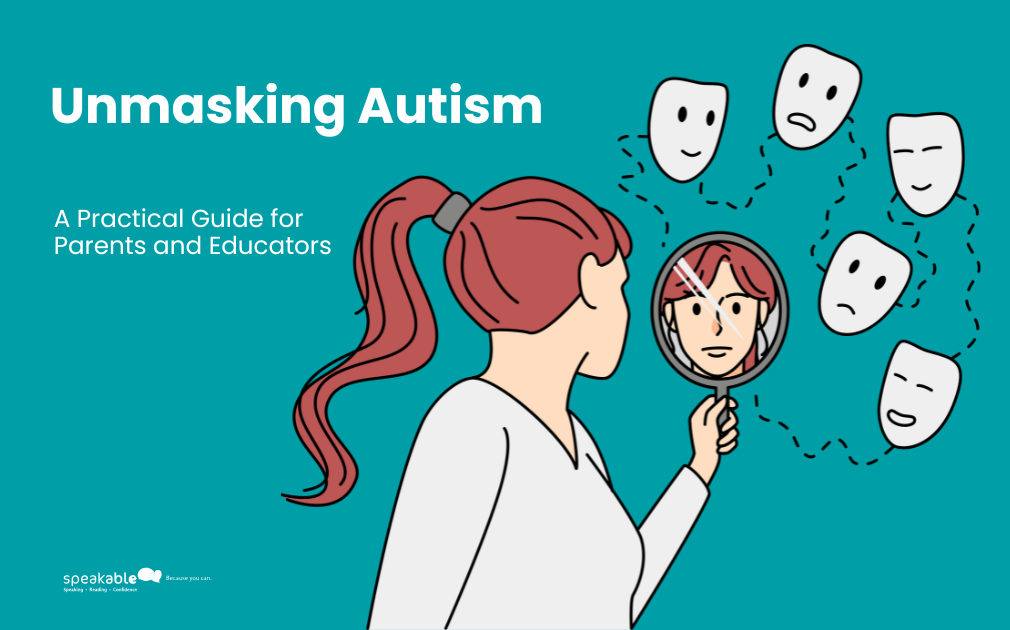Unmasking Autism: A Practical Guide for Parents and Educators
Discover how to identify subtle signs of autism in girls and explore effective strategies to support them at school and at home.
Introduction
Many autistic girls go unnoticed for years. This is often because they develop a coping strategy known as masking — a way of camouflaging social differences by imitating expected behaviors and hiding challenges. On the surface, these girls may appear to thrive, but behind the mask lies exhaustion, anxiety, and sometimes long-term emotional struggles.
Parents and educators play a crucial role in recognizing these subtle signs, validating emotions, and creating environments where girls on the spectrum can feel safe to be themselves. Support goes beyond academics — it is about offering emotional safety, practical strategies, and acceptance.
How Parents and Educators Can Truly Support Autistic Girls
Helping autistic girls is not about changing who they are, but about giving them the tools and space to flourish authentically. Here are practical ways to do so:
- Look beyond grades: academic achievement can hide emotional exhaustion.
- Acknowledge invisible effort: masking requires enormous energy that deserves recognition.
- Provide safe breaks: calm spaces allow for sensory and emotional regulation.
- Embrace special interests: these can be powerful gateways to confidence and social connection.
- Use clear and direct language: this reduces anxiety and improves understanding.
- Build a support network: open communication between families, schools, and professionals makes a difference.
- Encourage authenticity: remind girls they do not need to mask to be accepted.
These small but meaningful changes can transform daily life and foster both growth and well-being.
Emerging Trends in Speech Therapy: From Traditional to Individualized
Speech therapy for autistic children is evolving rapidly. Until recently, much of the practice focused on traditional methods such as teaching functional vocabulary, reducing echolalia, and reinforcing pragmatic language skills. While helpful for some, these approaches often overlooked the unique needs of autistic girls.
In 2025, the field looks very different. Key trends include:
- Gestalt Language Processing (GLP): increasingly recognized as a natural developmental path for many autistic children to build spontaneous language.
- Expanded assistive technology: augmentative and alternative communication (AAC) tools are more accessible and adaptable than ever.
- Personalization powered by AI: machine learning is beginning to shape therapy plans tailored to each child’s communication profile.
- Individual-centered approaches: rigid protocols are giving way to strategies that honor the child’s unique communication style.
This shift reflects a broader understanding: the goal is not to “fix” speech but to celebrate and support authentic communication.
Choosing the Right Communication Technology
With so many innovations, one common question remains: which technology is best for supporting communication?
- Augmentative Communication Apps (AAC):
- Advantages: accessible on smartphones or tablets, highly customizable, relatively low cost.
- Disadvantages: reliance on devices at all times and, in some cases, reduced spontaneous interaction.
- Dedicated Speech Devices:
- Advantages: robust, advanced features, independent of other personal devices.
- Disadvantages: higher cost, longer learning curve.
The choice is not simply about tools, but about empowering the child. The right solution is the one that enhances autonomy, confidence, and genuine expression.
Conclusion
Unmasking autism in girls means learning to see what is often invisible. Parents and educators who recognize the subtle signs, provide safe spaces, and embrace new approaches can change the trajectory of a child’s life.
At Speakable, we believe every voice matters — whether spoken, assisted through technology, or expressed in creative ways. By working together, families and schools can help autistic girls grow into confident individuals who no longer feel the need to hide behind a mask.




